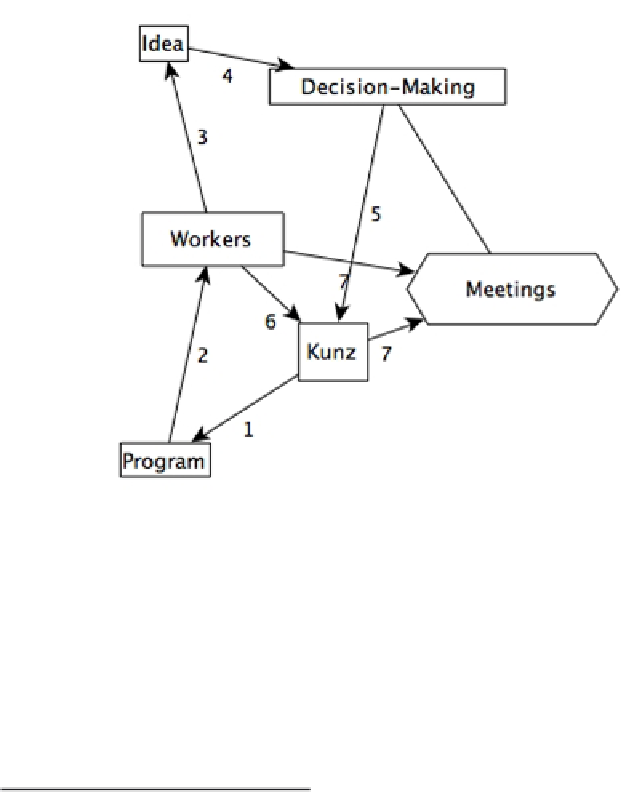Environmental Engineering Reference
In-Depth Information
edges. The right choice of the right instruments to manage was part of his job. The
fact that he saw the 'Programme' as a failure attests to the relevancy of this
choice. For him it was his co-responsibility, which was significant.20 In that re-
spect he decided that the 'Programme' did not run well. His original idea of how it
should have generated suggestions did not work well enough (as illustrated in lin-
ear,
Figure 18.2
). Rather, the reality of the 'Program' revealed itself differently to
him:
Figure 18.3
indicates how the idea, the formal suggestion scheme apparatus
and the 'Programme' became background to the more central meetings between
Kunz and the workers.
Fig. 18.3.
Centrality of Meetings
Thus, for Kunz the 'Programme' was a failure: the turnout of suggestions was not
big enough and some even induced considerable excess work. Moreover, he had to
believe that the motivation of workers decreased. Hence, the way the reality of the
'Programme' contingently developed was in conflict with his stakes. To improve
his position - and from his point of view: the priority of environmental matters as
well - a successful 'Programme' would have been better. Could he have acted
significantly differently? Possibly; but we cannot know. What we can see, how-
ever, is that the way he acted was well grounded in his rationality: the belief in the
20
Although, the way the instrument worked was contingent, its working was influenced
only at the most immediate level by the ideas of the workers and more indirectly by vari-
ous factors which he also could not control (like the dispositions of the workers, public
discourses on the environment, etc.).


Search WWH ::

Custom Search